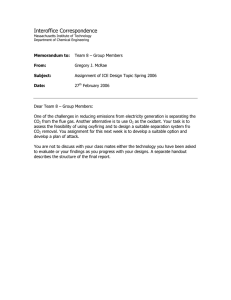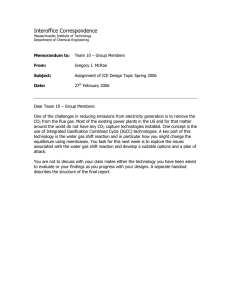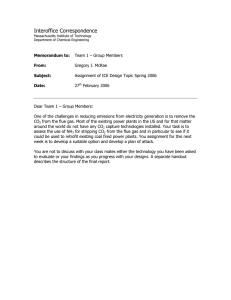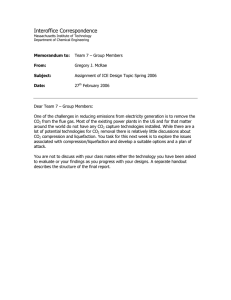ORAL PRESENTATION B SESSION FOUR
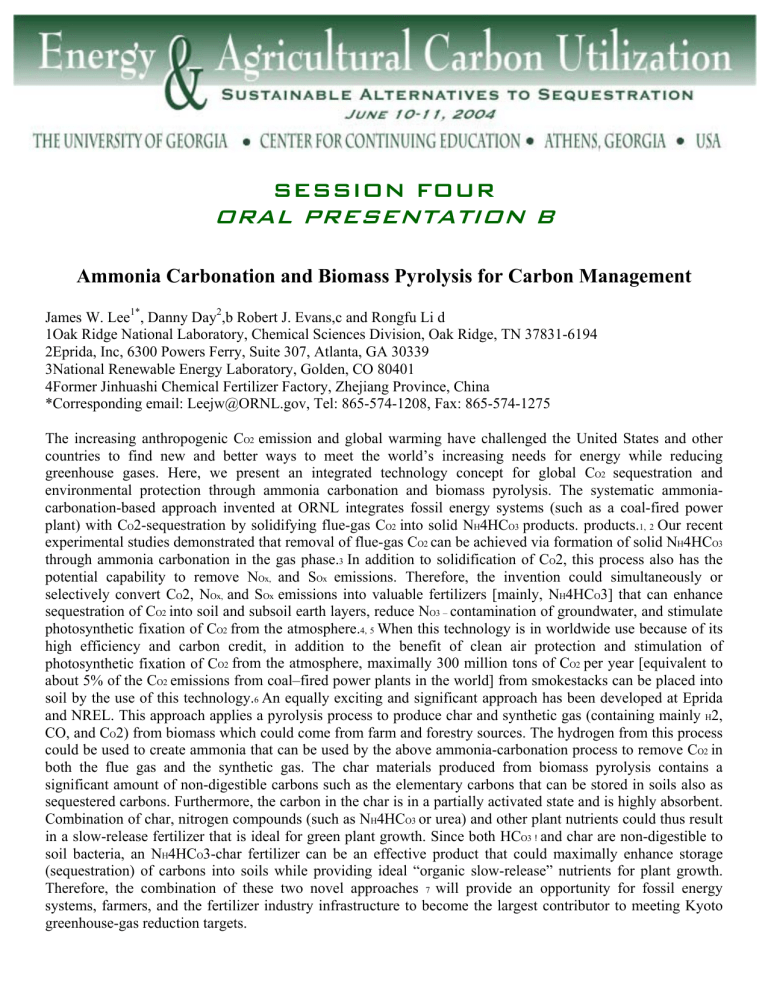
SESSION FOUR
ORAL PRESENTATION B
Ammonia Carbonation and Biomass Pyrolysis for Carbon Management
James W. Lee 1* , Danny Day 2 ,b Robert J. Evans,c and Rongfu Li d
1Oak Ridge National Laboratory, Chemical Sciences Division, Oak Ridge, TN 37831-6194
2Eprida, Inc, 6300 Powers Ferry, Suite 307, Atlanta, GA 30339
3National Renewable Energy Laboratory, Golden, CO 80401
4Former Jinhuashi Chemical Fertilizer Factory, Zhejiang Province, China
*Corresponding email: Leejw@ORNL.gov, Tel: 865-574-1208, Fax: 865-574-1275
The increasing anthropogenic C
O2 emission and global warming have challenged the United States and other countries to find new and better ways to meet the world’s increasing needs for energy while reducing greenhouse gases. Here, we present an integrated technology concept for global C
O2 sequestration and environmental protection through ammonia carbonation and biomass pyrolysis. The systematic ammoniacarbonation-based approach invented at ORNL integrates fossil energy systems (such as a coal-fired power plant) with C
O
2-sequestration by solidifying flue-gas C
O2 into solid N
H
4HC
O3 products. products.
1, 2
Our recent experimental studies demonstrated that removal of flue-gas C
O2 can be achieved via formation of solid N
H
4HC
O3 through ammonia carbonation in the gas phase.
3
In addition to solidification of C
O
2, this process also has the potential capability to remove N
Ox, and S
Ox emissions. Therefore, the invention could simultaneously or selectively convert C
O
2, N
Ox, and S
Ox emissions into valuable fertilizers [mainly, N
H
4HC
O
3] that can enhance sequestration of C
O2 into soil and subsoil earth layers, reduce N
O3 – contamination of groundwater, and stimulate photosynthetic fixation of C
O2 from the atmosphere.
4, 5
When this technology is in worldwide use because of its high efficiency and carbon credit, in addition to the benefit of clean air protection and stimulation of photosynthetic fixation of C
O2 from the atmosphere, maximally 300 million tons of C
O2 per year [equivalent to about 5% of the C
O2 emissions from coal–fired power plants in the world] from smokestacks can be placed into soil by the use of this technology.
6
An equally exciting and significant approach has been developed at Eprida and NREL. This approach applies a pyrolysis process to produce char and synthetic gas (containing mainly
H
2,
CO, and C
O
2) from biomass which could come from farm and forestry sources. The hydrogen from this process could be used to create ammonia that can be used by the above ammonia-carbonation process to remove C
O2 in both the flue gas and the synthetic gas. The char materials produced from biomass pyrolysis contains a significant amount of non-digestible carbons such as the elementary carbons that can be stored in soils also as sequestered carbons. Furthermore, the carbon in the char is in a partially activated state and is highly absorbent.
Combination of char, nitrogen compounds (such as N
H
4HC
O3 or urea) and other plant nutrients could thus result in a slow-release fertilizer that is ideal for green plant growth. Since both HC
O3 ! and char are non-digestible to soil bacteria, an N
H
4HC
O
3-char fertilizer can be an effective product that could maximally enhance storage
(sequestration) of carbons into soils while providing ideal “organic slow-release” nutrients for plant growth.
Therefore, the combination of these two novel approaches
7 will provide an opportunity for fossil energy systems, farmers, and the fertilizer industry infrastructure to become the largest contributor to meeting Kyoto greenhouse-gas reduction targets.




